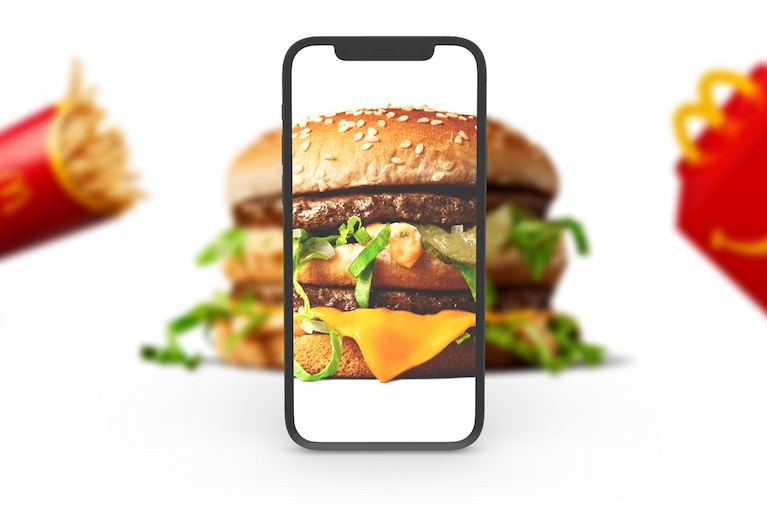How digitalisation is revolutionising the McDonald's experience
The main goal of companies is to improve efficiency without increasing costs. McDonald’s, a pioneer in optimising results, has achieved this through digitalisation. The best restaurant chains recognise the importance of adopting the latest technologies. Here’s how McDonald’s continues to be a leader in the fast food industry.

What is digitisation and why is it so important?
Digitalisation is a process of transforming traditional business processes, both for services and products, into digital processes in order to improve their end results. This involves implementing tools in various areas: customer service, human resources management, inventory planning, communication and many others.
It is very important because, if applied correctly, it can bring many benefits:
- Greater efficiency: automating repetitive processes reduces the time staff need to devote to such activities, freeing them up to perform more complex and/or specific tasks.
- Improving the customer experience: offering more personalised services for each type of customer thanks to the data collected, thereby segmenting their needs and providing a more accurate service.
- Cost reduction: fewer physical resources and less staff are required, and operational management is improved.
- Real-time data access: enables the collection of a large amount of classified information essential for decision-making.
- Greater reach: facilitates access to a wider, more global audience.
- Continuous innovation: every tool makes it easier to integrate new technologies to keep improving results.
- Improves communication: it is essential for communication and information exchange, not only between employees and managers, but also with customers and suppliers.
- Adaptability: It helps companies respond quickly to market changes, as the information gathered allows them to predict trend changes and cyclical periods.
Some real-life examples of digitalisation integration at McDonald's and its competitors:
Chioschi self-service
These screens distributed throughout restaurants allow customers to place their orders in complete peace of mind without having to interact with cashiers. Orders can be easily customised without having to queue and avoiding errors due to misunderstandings.
For McDonald’s, this technology means fewer employees and fewer hungry people waiting in line.
App McDonald’s
It offers features such as ‘Order and Collect’ and ‘McDelivery’, which make it easy to place orders and collect them at the most convenient location. The app improves convenience and personalisation by offering exclusive discounts and order tracking.
This allows employees to focus on processing orders, thereby speeding up production and reducing delivery times for both in-store and app orders.
Mobile orders and contactless payments
Customers can order and pay via the app, reducing the need for cash and speeding up the purchasing process. This increases safety and efficiency for both customers and staff.
Digital kitchen management systems
These systems enable better coordination and monitoring of orders in real time, improving efficiency in food preparation based on order arrival and reducing waste. Customers can also view the status of their order to get an idea of how long they will have to wait.
Geolocation technology in the app
Inform customers about the nearest restaurants so they can order and collect their orders at the most convenient location. It is also very useful during holidays, as it shows the options offered by the location. This saves time and improves the user experience.
Integration with delivery platforms
McDonald’s has integrated its system with delivery services such as Uber Eats and Rappi, expanding its reach and allowing customers to order from home or the office via the app. In this way, it is able to meet another type of need, reaching a new customer segment and increasing the number of orders.
Digital loyalty programmes
When it comes to digital loyalty programmes, McDonald’s is king. It offers rewards and discounts through its app, encouraging repeat purchases and improving customer loyalty. In addition to these year-round promotions, in the summer, for example, it also launches a campaign in collaboration with Monopoly, promoting the idea that the more you consume, the more likely you are to win very attractive prizes.
What are other restaurants investing in?
Large chains such as Hard Rock Café and Grupo Saona are introducing smart booking assistants in their restaurants to improve efficiency and customer experience. These assistants allow bookings to be managed automatically, reducing errors and optimising table utilisation. They also offer convenience to customers, who can easily make reservations by voice or app, even outside opening hours. This not only speeds up the process, but also allows the restaurant to collect useful data on customer preferences, improving service and personalisation.
To stay up to date with all the latest news, we recommend you take a look at our Instagram.
Would you like to try a conversational assistant in your business?
Write to us at digame@bookline.ai or fill in the form below.
